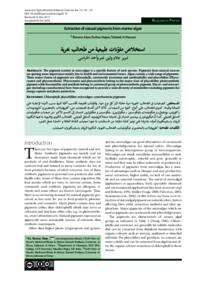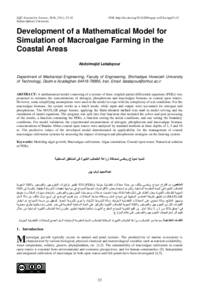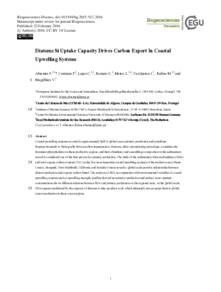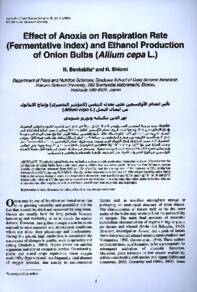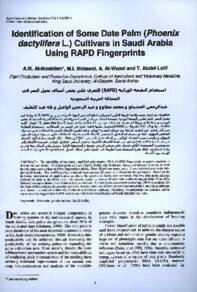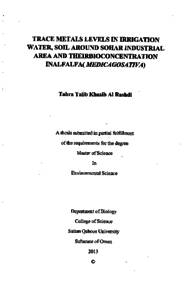Document
Extraction of natural pigments from marine algae.
Contributors
Najam, Lubna., Author
Al Harrasi, Ahmed., Author
Publisher
جامعة السلطان قابوس. كلية العلوم الزراعية والبحرية
Gregorian
2018
Language
English
English abstract
The pigment content in microalgae is a specific feature of each species. Pigments from natural sources are gaining more importance mainly due to health and environmental issues. Algae contain a wide range of pigments. Three major classes of pigments are chlorophylls, carotenoids (carotenes and xanthophylls) and phycobilins (Phycocyanin and phycoerythrin). Phycocyanin and phycoerythrin belong to the major class of phycobilins photosynthetic pigment while fucoxanthin and peridinin belong to carotenoid group of photosynthetic pigment. Macro- and microalgae (including cyanobacteria) have been recognized to provide a wide diversity of metabolites including pigments for energy capture and photo-protection.
Member of
ISSN
2410-1079
Resource URL
Citation
Alam, T., Najam, L., & Al Harrasi, A. (2018). Extraction of natural pigments from marine algae. Agricultural and Marian Sciences Journal, 23 (1), 81-91.
Arabic abstract
للصبغيات في الطحالب المجهرية ميزة خاصّة تميّز كل نوع منها. والملوّنات الطبيعية تكتسب أهميّة كبيرة بسبب آثارها الإيجابية على الصحّة والبيئة. تحتوي الطحالب على أنواع كثيرة من الصبغيات. ثلاثة أكبر أقسام الصبغيات هي: كلوروفيلات (اليخضور)، كاروتينويدات (كاورتين، زونتفيل) وَ فيكوبيلينات (فيكوسينين، فيكوارترين). فيكوسينين وَ فيكوارترين تنتميان إلى القسم الأكبر من صبغيات فيكوبيلينات التمثيل الضوئي. كما أنّ فيكوزونتين وَ بريدينين تنتميان إلى مجموعة صبغة كاروتينويد التمثيل الضوئي. الطحالب الكبرى والمجهرية بما فيها البكتيريا الزرقاء (سيانوبكتيريا) تُعرف بقدرتها على توفر كميّة متنوّعة من المستقلبات بما فيها صبغيات التقاط الطاقة والحماية بفعل الضوء.
Category
Journal articles

